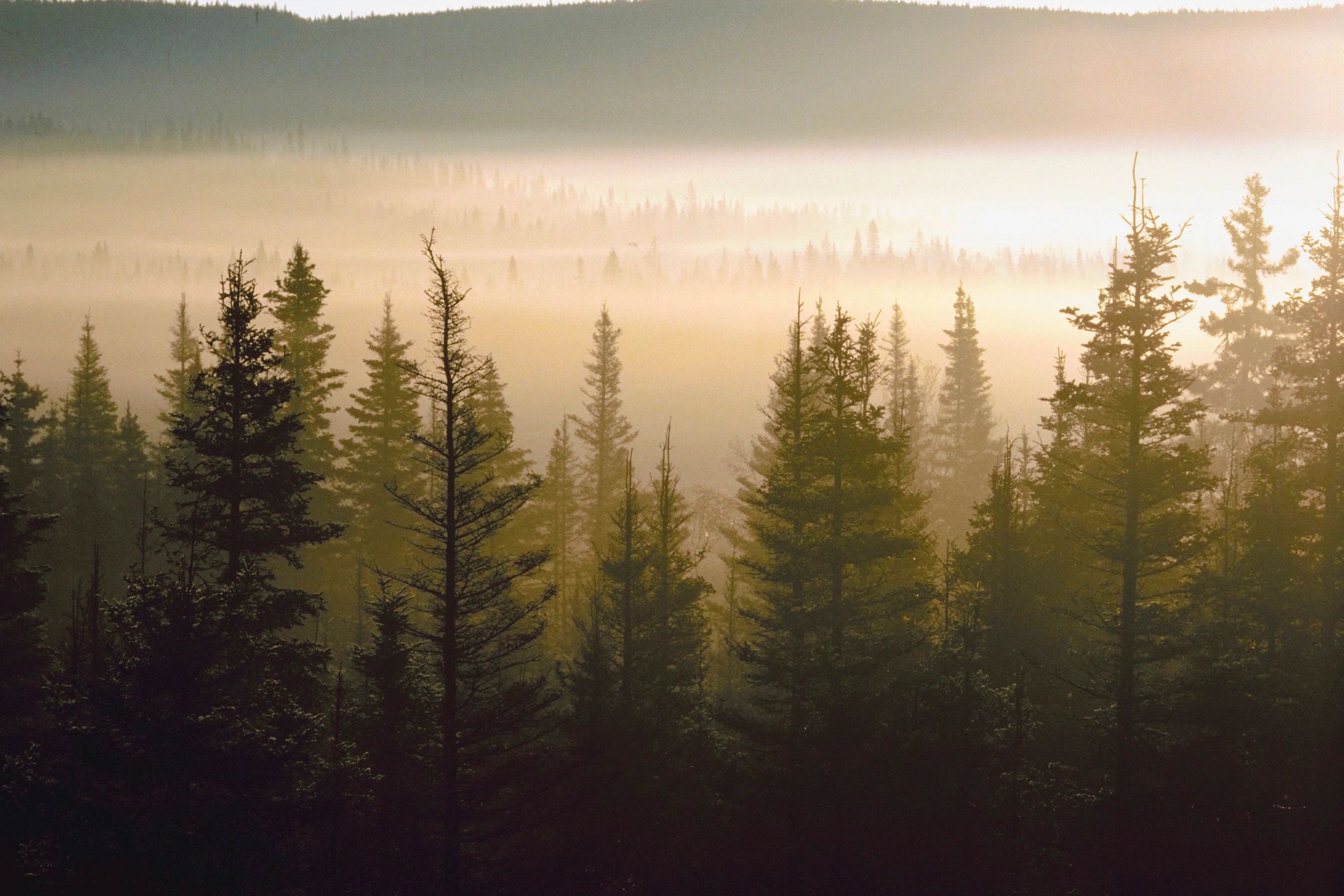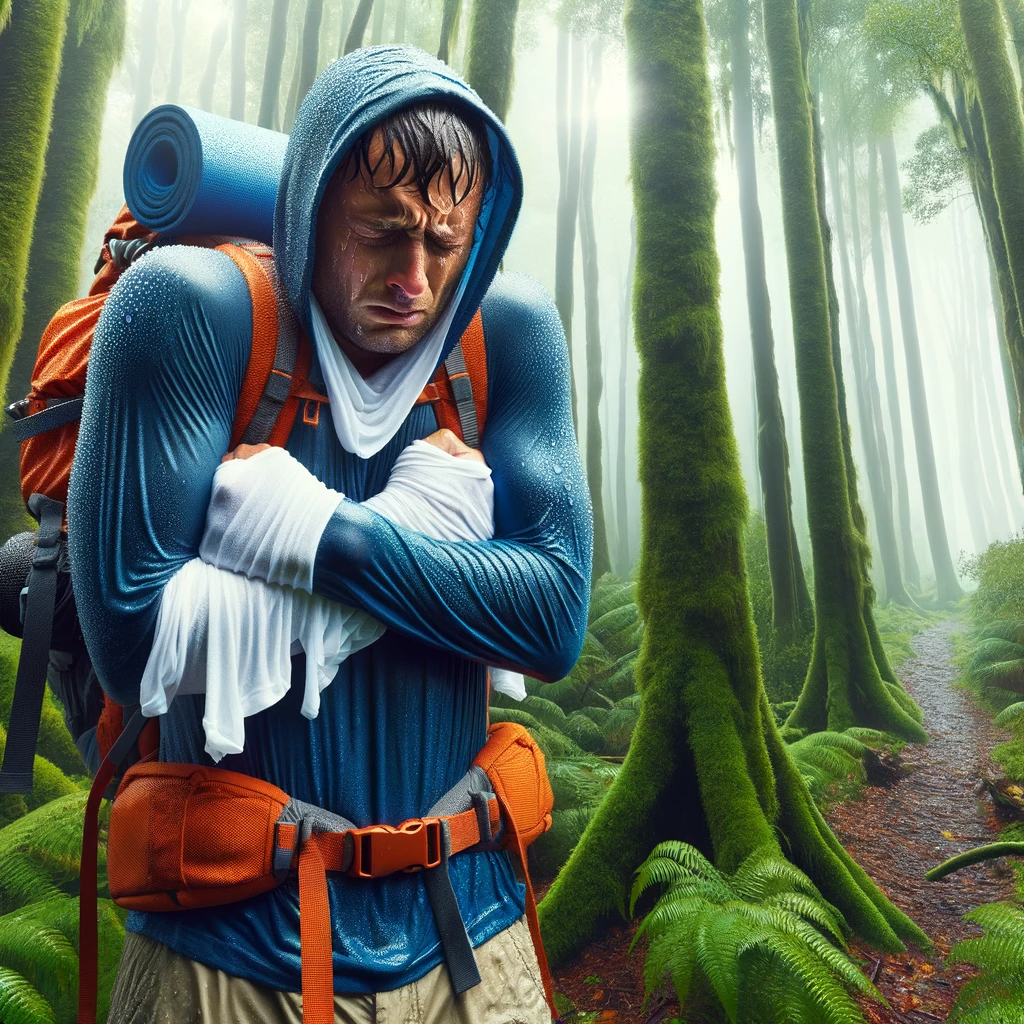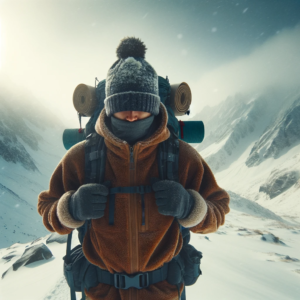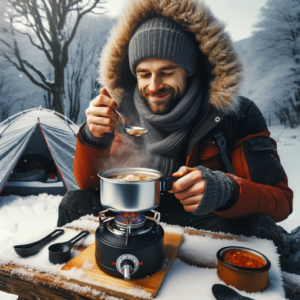Introduction: Understanding Common Mistakes
Hiking and Backpacking is a process full of learning and discovery, offering unique experiences with each trail. Of course, it’s always better to learn from other people’s mistakes and save yourself the blisters! Many hikers before you have learned the hard mistakes. So this article aims to help learn from them.
This not only saves you from discomfort but also addresses a crucial question many new hikers ask: “Is hiking dangerous?” By avoiding common mistakes, you can ensure a safer and more enjoyable hike. So, here are 7 critical mistakes to avoid while hiking!
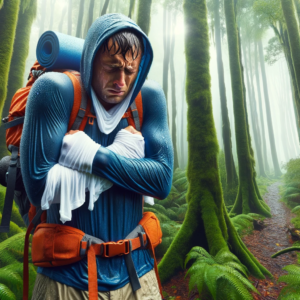
1. The Perils of Wearing Cotton: Stay Dry to Stay Safe
Don’t do this to yourself, cotton holds moisture!! One of the essential hiking safety tips is to avoid cotton clothing. While cotton might seem comfortable, it becomes a liability on the trails. It retains moisture, leading to a chilling effect when wet, and adds unnecessary weight. This can be particularly dangerous in cold environments, exacerbating the risks associated with hypothermia.
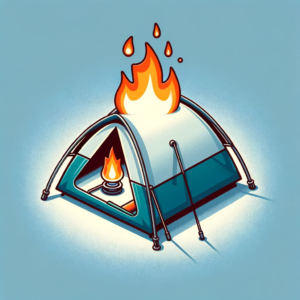
2. Cooking Inside Tents: A Hazardous Convenience
Many wonder, “How dangerous is hiking when it comes to campsite activities?” Cooking inside your tent is extremely risky. The dangers range from potentially burning your shelter to succumbing to carbon monoxide poisoning. Additionally, the scent of food can attract wildlife, increasing the risk of dangerous critters getting too close for comfort. You probably should not make where you sleep smell like a wild Golden Corral.
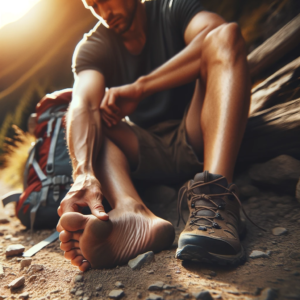
3. Ignoring Pain: Listen to Your Body While Hiking
Backpacking comes with its physical demands, and pain can sometimes be part of the experience. However, ignoring pain, especially hotspots that can turn into blisters, is a mistake. Addressing pain promptly can prevent more severe injuries, ensuring hiking remains an enjoyable adventure rather than a perilous journey. Maybe stop on a nice rock with a view and add some moleskin or even duck tape to prevent any blisters before they occur.
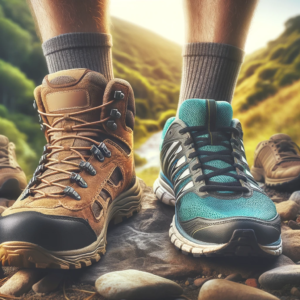
4. Footwear Hiking Faux Pas: Break In Before You Break Down
A common query is, “Can hiking be dangerous due to improper footwear?” Absolutely. Not breaking in your hiking boots or shoes before a long trek can lead to discomfort and injuries. The style and fitting will depend on the individual but as long as it supports you where you need and is sturdy enough to take a daily beating then its a good shoe for you. Just make sure you are comfortable in them first by knocking out some easy miles
Pro tip: If you have strong ankles then try wearing trail runners instead of boots. They are much lighter and tend to cause fewer blisters.
Whichever shoe is right for you always ensure they’re well-worn-in before embarking on your hike.
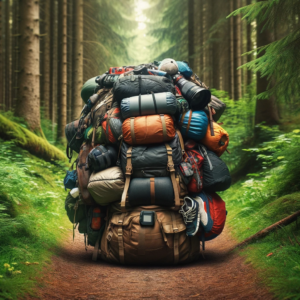
5. The Burden of Overpacking: Essential Hiking Safety
Do you really need four pairs of underwear, three shirts, and three pairs of shorts for your two-day hike? Do you really need three pans to cook your freeze-dried meal?
Overpacking can transform an enjoyable hike into a laborious endeavor. It’s not just about discomfort; carrying too much weight can lead to fatigue and injury. Streamlining your gear is essential, so consider each item’s necessity and utility. Remember, on the trail, less is often more.
Take a few short hikes and whittle down your gear before setting off on a longer trek and remember every ounce makes a difference after a full day of hiking. See our Gear guide for some ideas on what is and isn’t necessary for your hike
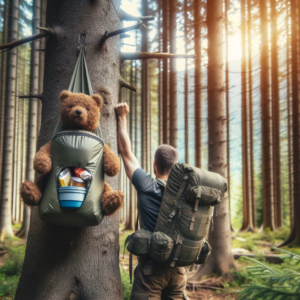
6. Food Storage Flaws: Preventing Wildlife Encounters While Hiking
A crucial aspect of hiking safety is proper food storage. There is nothing worse than being 25 miles away from the nearest town and realizing that your food sack got ravaged by mice or worse in the middle of the night.
Inadequate food storage can attract wildlife, posing dangers to both you and the animals. Learning and practicing the correct use of bear bags or canisters is vital, especially in areas with active wildlife.
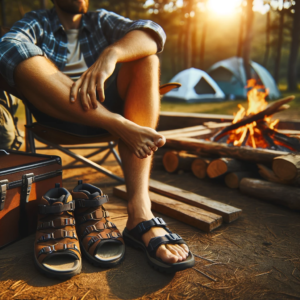
7. Neglecting Camp Shoes: Essential for Post-Hike Recovery
After a long day of hiking, you need to get out of your boots and let your feet breathe a bit. There is nothing better than slipping off your hiking footwear and feeling fresh air on your feet. Neglecting to pack camp shoes is a mistake many regret. Lightweight sandals or comfortable camp shoes allow your feet to rest and recover, preparing you for the next day’s journey.
Often a cheap $1 pair of sandals will suffice and not weigh you down very much.
Conclusion: Hiking Safe Practices for an Enjoyable Adventure
Avoiding these seven mistakes won’t guarantee a flawless hike, but it will make your adventure safer and more enjoyable. Understanding and addressing the question, “Is hiking dangerous?” with practical knowledge and preparation is key to a successful hike. So gear up, get informed, and embark on your hiking adventure with confidence!
